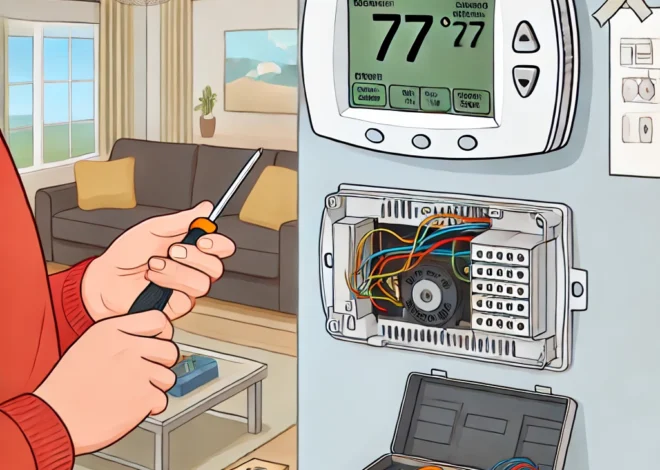
Solar Energy 101: Everything You Need to Know
The use of Solar Energy as a feasible substitute for conventional fossil fuels has grown in recent years. Solar energy is a renewable and plentiful energy source. It is produced using photovoltaic cells, which turn sunlight into electricity. It is a clean, sustainable form of energy that doesn’t release any pollutants or dangerous greenhouse gases. Several different things can be powered by solar energy, including residences, companies, isolated areas, and off-grid communities. Solar energy is anticipated to play a bigger part in helping us fulfil our energy demands sustainably and ecologically friendly as the need for clean energy keeps growing.

I. Introduction
A. A description of Solar Energy
The term “solar energy” refers to energy captured from the sun and transformed into energy that may be used for heating, cooling, and power. Several methods can be used to harvest this energy, including photovoltaic, concentrated solar power, and solar thermal systems.
B. The value of solar power
A significant renewable energy source that has grown in popularity over time is solar energy. It may lead to a decrease in the use of fossil fuels, a reduction in greenhouse gas emissions, and a move toward a more sustainable future. Moreover, solar energy has the potential to boost energy security and independence, generate employment opportunities, and lower energy prices.
II. How Solar Energy Works
A. Photovoltaic systems
Solar electric and photovoltaic (PV) systems are two examples of renewable energy technologies that use sunshine to generate power. Solar panels, which are composed of photovoltaic cells that transform sunlight into direct current (DC) power, are used in this technique.
PV systems have many uses, from supplying electricity to whole towns to individual houses and businesses. In space applications, they are also employed to power satellites and other spacecraft.
B. Concentrated solar power systems
Concentrated solar power systems use mirrors or lenses to direct sunlight onto a tiny region where it warms a fluid, such as molten salt or water. The steam from the heat is then utilized to power a turbine that creates energy.
C. Solar thermal systems
Solar thermal systems heat water or air using the sun’s energy, which may be utilized to heat and cool buildings or produce electricity. The two primary categories of solar thermal systems are evacuated tube collectors and flat-plate collectors. While evacuated tube collectors are more effective and used to produce energy, flat-plate collectors are more popular and used to heat water.
D. Differences between the systems
The primary variations among solar energy systems are how they transform sunshine into useful energy, how efficient they are, and how much they cost to install. Photovoltaic technologies are the most effective and expensive technologies; solar thermal and concentrated solar power systems are less effective but less expensive to build.
III. Advantages of Solar Energy
A. Renewable energy source
A source of renewable energy Solar power is an endlessly renewable energy source that doesn’t produce greenhouse emissions. As a result, it serves as a cleaner and more sustainable substitute for fossil fuels.
B. Environmentally friendly
Solar energy systems don’t release dangerous pollutants or have an impact on global warming. Because of this, it is a cleaner energy source than fossil fuels.
C. Lower energy costs
In the long term, solar energy systems are a more cost-effective energy source since they can provide electricity at a lower cost than fossil fuels after they are deployed.
D. Job creation
The expanding solar sector has the potential to provide a large number of jobs in production, installation, and maintenance.
E. Energy independence
Particularly in isolated locations where conventional energy sources are scarce, solar energy can assist promote energy independence and lessen reliance on fossil fuels.
IV. Disadvantages of Solar Energy
A. Initial high cost of installation
Some people and companies may be put off from investing in solar energy by the installation costs, which may be substantial, especially for photovoltaic systems.
B. Limited efficiency
Due to their lower efficiency compared to conventional fossil fuel energy sources, solar energy systems need more area and resources to produce the same quantity of electricity.
C. Intermittent source of energy
As the sun only shines throughout the day, solar energy is an intermittent source of power. Because of this, it is challenging to completely rely on solar energy to satisfy energy needs.
D. Land use requirements Large-scale
Significant quantities of land are needed for large-scale solar energy systems, which can have an adverse effect on the environment and compete with other land uses like agriculture and conservation.
V. Applications of Solar Energy
A. Residential use
As homeowners want to cut their energy expenses and carbon impact, residential solar energy systems are growing in popularity. These systems, which may supply heating, cooling, and power energy, can be put on rooftops or in yards.
B. Commercial use
Solar energy systems may also be advantageous for commercial structures like offices and retail establishments. These systems may be used to generate electricity as well as power heating, cooling, and lighting systems.
C. Industrial use
Solar energy systems may be used in industrial buildings like factories and warehouses to power equipment and produce electricity.
D. Transportation use
Electric cars may also be charged directly from the sun or powered by solar panels that are mounted on the vehicles themselves.
VI. Solar Energy Policies and Programs
A. Federal policies
The federal government has put in place a number of laws and initiatives, including tax breaks and loan guarantees, to promote the creation and use of solar energy.
B. State policies
The development and use of solar energy have also been supported by several state regulations and initiatives, such as net metering and renewable energy requirements.
C. International policies
To combat climate change, international agreements like the Paris Agreement encourage the development of renewable energy sources like solar power.
D. Solar energy incentive programs
Feed-in tariffs and rebates are two incentive schemes that can help promote the creation and use of solar energy by giving both people and companies financial support.
VII. Future of Solar Energy
A. Technological advancements
Technological developments are anticipated to boost the feasibility and competitiveness of solar energy, including increases in energy storage systems and solar cell efficiency.
B. Expansion of solar energy use
As more people and organisations look for ways to cut their energy expenses and carbon impact, solar energy usage is anticipated to grow.
C. Collaboration between countries
Cooperation between nations, particularly in poor nations, can aid in accelerating the development and use of solar energy technology.
D. Challenges for future development
The intermittent nature of solar energy and the requirement for more energy storage capacity are two issues that must to be resolved before solar energy can be developed and widely used.
VIII. Conclusion
A. Summary of key points
Solar energy is a clean, renewable energy source that might help eliminate the need for fossil fuels, bring down energy prices, and open up new employment possibilities. The research and application of solar energy technologies still face certain obstacles, though.
B. Future outlook of solar energy
With predicted further technical breakthroughs and growing acceptance, the future of solar energy is bright. International cooperation and the creation of novel solutions will be required to address the issues with solar energy.
C. Call to action for increased solar energy usage
By purchasing solar energy systems and lobbying for favorable municipal and federal laws and initiatives, people and companies may contribute to promoting solar energy use.


